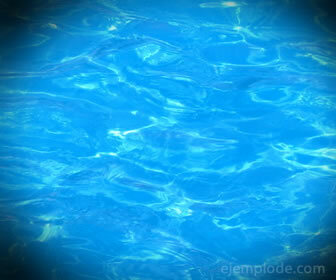Chemical Substances Example
Chemistry / / July 04, 2021
Chemicals are made up of molecules that retain a defined and constant chemical structure, and its elements cannot be decomposed into simpler substances by mechanical operations.
All the matter around us is made up of atoms of different elements, which combine with each other to form molecules. Molecules can be made up of atoms of the same element or of different elements, forming a substance with its own characteristics. A substance can be made up of molecules of the same element, of molecules of the same combination, or of two or more molecules that form a single substance, since they always keep their composition and characteristics constant Chemicals.
Types of chemicals:
1.- Simple Substances
They are formed by atoms of a single element. Gases like hydrogen, oxygen, or solids like iron or copper, or liquids like mercury, are substances made up of molecules of a single chemical element.
2.- Compound Substances
They are substances that are formed by combinations of atoms of different elements, which produce the same substance, such as salt crystals, formed only from sodium chloride, sugar crystals, butane gas from lighters, or alloys such as bronze, from which the keys to the doors.
3.- Organic compounds
They are chemical substances formed on a base or skeleton of carbon atoms, and that can form chains, lines or rings, to which atoms of other elements are attached, mainly hydrogen, oxygen, nitrogen and sulfur. They are present in living tissues, and are also produced by biological decomposition.
4.- Chemical mixtures
In the case of substances that are chemical mixtures, they are made up of molecules of different compounds, which when mixed result in a substance that combines characteristics of its original compounds, conserves the same proportion between its molecules, and has constant physical characteristics, although at the molecular level, their original molecules form interlocking chains, individually conserving their features. The most common case of this type of mixture is metallic alloys or electrolytic solutions.
 Water is a compound chemical.
Water is a compound chemical.
A characteristic of chemical substances is that we cannot separate them by basic physical means.
In chemistry it is very important to know the chemical substances they form and their physical and chemical characteristics of how they are separated and combined, since this knowledge will allow us to predict the substances that we will obtain and the way in which the reaction.
Types of substances according to reactivity:
Chemicals can be classified in relation to their reactivity, which is how easily they combine with other substances.
Inert substances
They are those that can hardly be combined with other substances, are chemically neutral or require special conditions to combine.
Reactive substances
They are the ones that can be combined with other substances. Some are very reactive, as in the case of acids or hydroxides, or not very reactive, as in the case of gold, which only mixes with few substances.
Catalysts
They are both inert and reactive substances, which intervene in a chemical reaction, facilitating the reactions and mixing of other components, but remaining unaltered at the end of the reaction chemistry.
40 examples of chemicals:
Simple substances:
- Oxygen
- Iron
- Gold
- Silver
- Mercury
- Carbon
- Hydrogen
- Copper
- Aluminum
- Sulfur
Compound substances:
- Hydrochloric acid
- Water
- Caustic soda (Sodium hydroxide)
- Sulfuric acid
- Nitrous oxide
- Sodium bicarbonate
- Zinc oxide
- Glass
- Alum Stone
- Ammonia
Organic substances:
- Butane gas
- Ethyl alcohol (from drinking)
- Isopropyl alcohol
- Gasoline
- Paraffin
- Vinegar (acetic acid)
- Diesel
- Lubricant oils
- Glycerin
- Cooking oil
Chemical mixtures:
- Steel
- Bronze
- Ammonia water
- Salt water electrolyte
- Duralumin (iron and aluminum alloy)
- Soap
- Shampoo
- Brass
- Tin solder
- Milk
- Keep reading: Mixtures.
